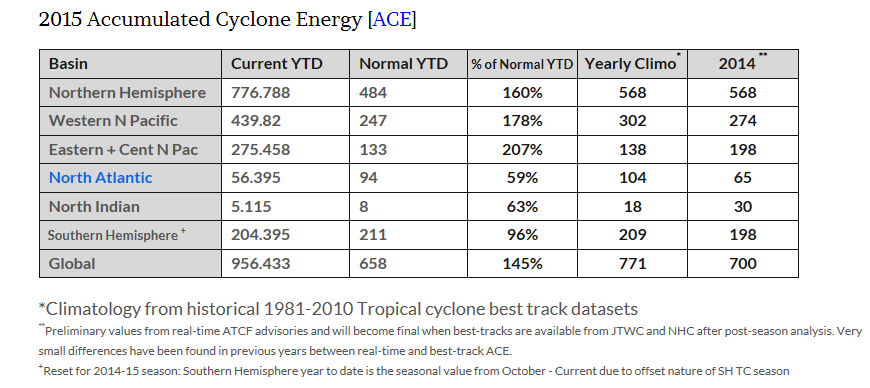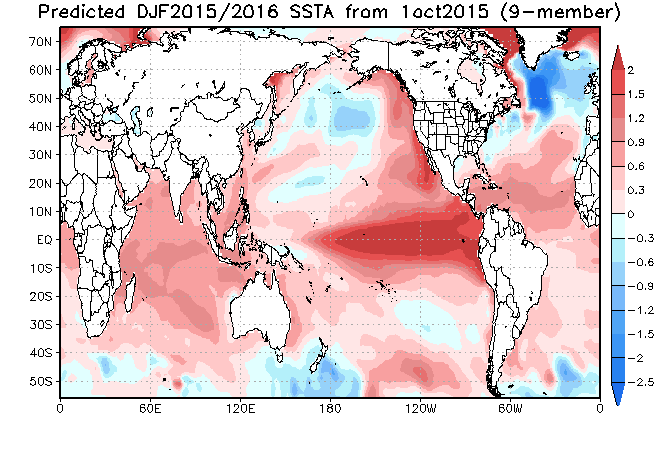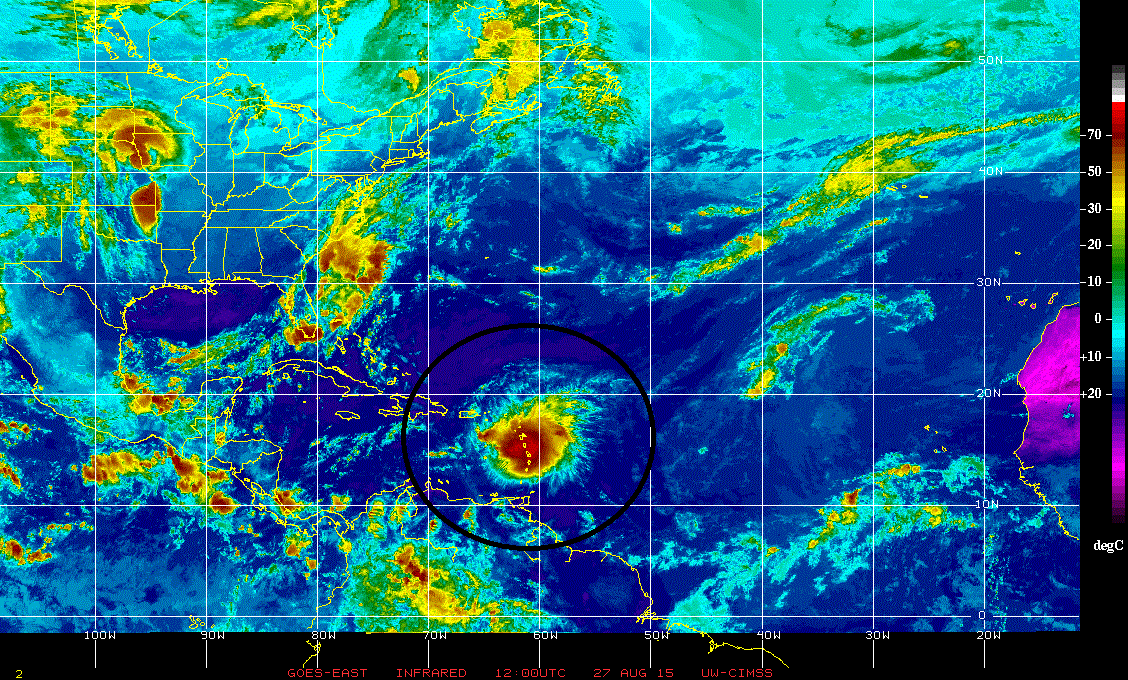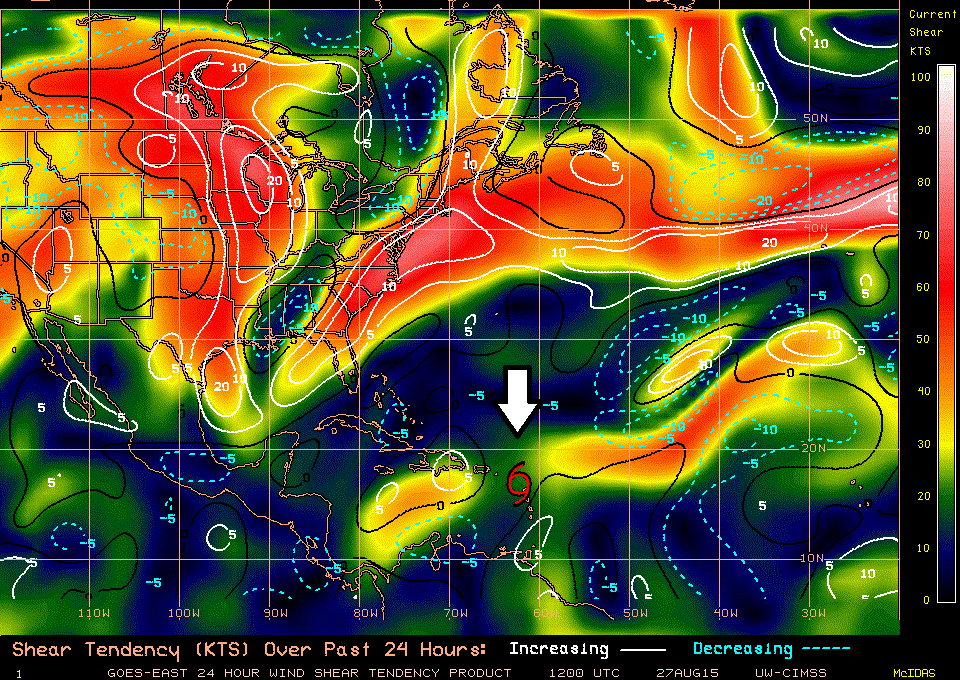Overview
It looks like the Mid-Atlantic region is going to experience another snowy winter with numerous coastal storms – and there can even be a blockbuster snowstorm or two. Temperatures are likely to average out to near normal or slightly above-normal for the winter season in the Mid-Atlantic region, but there will be occasional Arctic air outbreaks as well. Warmer-than-normal weather is likely across much of the northern US and colder-than-normal conditions are expected in much of the Deep South. Last winter, the Mid-Atlantic region suffered through a snowy and cold winter and farther up the coastline, Boston, Massachusetts experienced its snowiest winter ever. If this winter does indeed produce more snow than normal in DC, Philly, and New York then it would be the third in a row which is quite uncommon around here.
Key factors
There are several key factors listed below that were involved with this year’s winter outlook:
1. Strong El Nino conditions focused in the central part of the tropical Pacific Ocean
2. A warm sea surface temperature anomaly in the northeastern Pacific Ocean
3. Warmer-than-normal sea surface temperatures near the US east coast
4. Favorable signals for “high-latitude blocking” from a) Arctic Oscillation index trend during the summer and fall, b) autumnal snowpack in the northern hemisphere, and c) low solar activity
5. Analog years: 1997-1998, 1991-1992, 1982-1983, 1957-1958, 2009-2010, 1986-1987
El Nino
A very strong El Nino event is well underway in the tropical Pacific Ocean and it will play a vital role in our upcoming winter weather. Very strong El Nino events were taking place on average about once a decade in the latter part of last century (1972-1973, 1982-1983, 1997-1998); however, the first decade of this century did not feature a comparable very strong El Nino. Instead, there were three moderate El Nino events to begin this century in the following years: 2002-2003, 2006-2007 and 2009-2010. The current El Nino is more analogous in strength to those episodes which occurred in the 1970’s, 1980’s and 1990’s.
The current El Nino began during the latter part of last year and strengthened considerably earlier this year. An El Nino of this magnitude is likely to increase the intensity of the southern branch of the jet stream during the winter season and it'll act to pump a lot of moisture into the upper-level wind flow. The southern branch of the jet stream is crucial for the development of storms in the southwestern US (e.g., California) that can then travel across the southern US and ride up the east coast (i.e., coastal storms). Strong El Nino’s have produced some blockbuster snowstorms for the Mid-Atlantic region in the past (e.g., February 1983) and the combination of the “pumped up” southern branch of the jet stream and warmer-than-normal sea surface temperatures near the US east coast raises the prospects for just such an event or two this winter.
While the magnitude of El Nino is very important as far as its potential impact on our winter weather, so is its location. A “centrally-based” El Nino is one in which the greatest sea surface temperature anomalies are located in the central tropical Pacific Ocean whereas an “eastern-based” El Nino has the warmest water relative–to-normal much closer to the west coast of South America. A “centrally-based” El Nino is more likely to be associated with an upper-level ridge of high pressure along the west coast of North America and this, in turn, can help to push cold air masses into the northeastern US. On the other hand, an “eastern-based” El Nino (e.g., 1997-1998) with its warming focused near the west coast of South America would more likely result in southwesterly winds across the eastern US producing warmer-than-normal wintertime conditions. I believe the most recent changes in the overall sea surface temperature pattern across the tropical Pacific Ocean favor the idea of a “centrally-based” El Nino this winter and multiple computer forecast models tend to support this notion (NOAA CFSv2, JAMSTEC, UKMET).
Northeastern Pacific Ocean warm pool of water
El Nino is not the only game in town as far as the winter outlook is concerned and it is important to look elsewhere. Another important region that may impact our winter weather is the northeastern Pacific Ocean where a warm pool of water has persisted for the past couple of winters. It appears that this pattern will continue through another winter season and this should help to generate high pressure ridging along the west coast of North America which, in turn, should push cold air outbreaks into the northeastern US.
Two independently-made sea surface temperature anomaly forecasts made for the upcoming winter season (below) tend to agree on the major players across the all-important Pacific Ocean. NOAA’s CFSv2 suggests the El Nino conditions will become more “centrally-based” in the Pacific Ocean during the winter season and that there will be a continuation of warmer-than-normal water in the northeastern Pacific Ocean. The JAMSTEC forecast model is produced by Japan’s Meteorological Agency and it tends to agree with the NOAA/CFSv2 forecast in the overall sea surface temperature pattern in the Pacific Ocean.






























